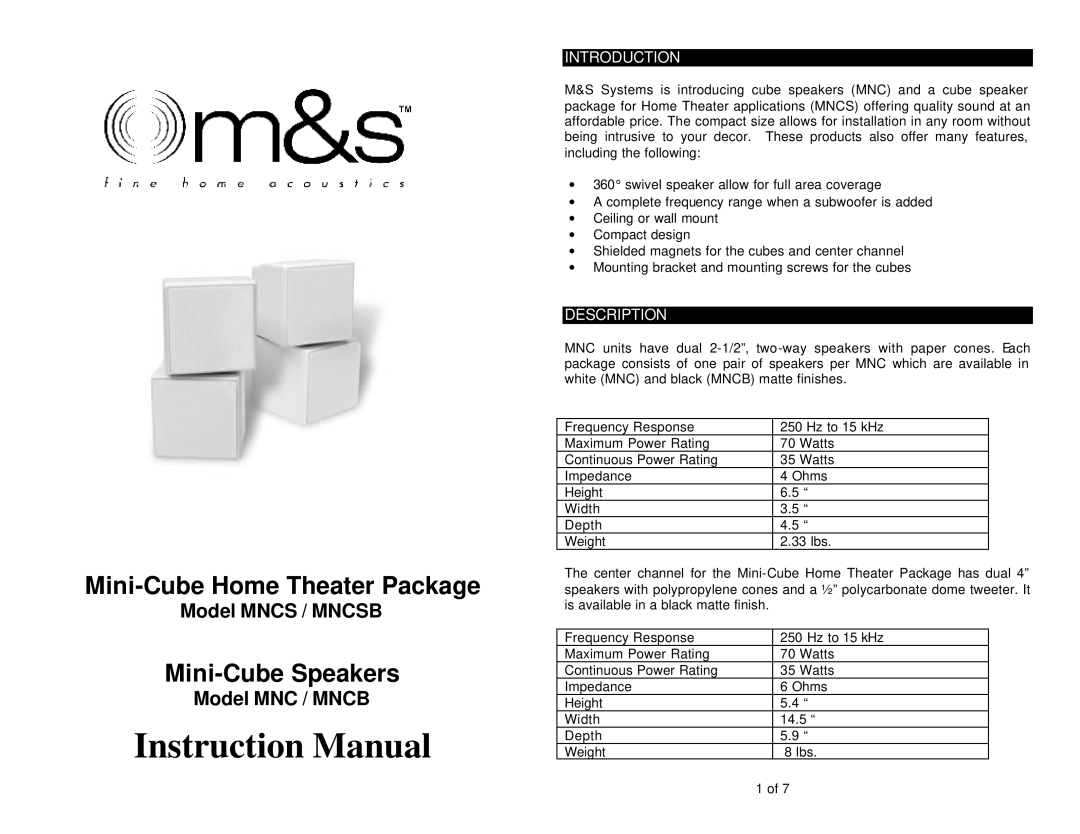MNC / MNCB, MNCS / MNCSB specifications
M&S Systems MNC (Multi-Network Controller) and its variations such as MNCB, MNCS, and MNCSB represent cutting-edge solutions in the realm of network management and control. These systems are designed to handle the complexities of modern communication networks, ensuring efficient operation while providing a robust and scalable architecture.The primary feature of M&S Systems MNC is its ability to manage multiple network interfaces simultaneously, providing seamless connectivity across various communication channels. This multi-network approach allows organizations to leverage diverse network technologies, enhancing resiliency and performance. The MNC architecture can support both wired and wireless technologies, ensuring compatibility with traditional telecommunication networks and emerging internet-based protocols.
In terms of technology, M&S Systems employs advanced algorithms for traffic management, prioritizing data packets based on real-time analysis of network conditions. This intelligent traffic shaping helps optimize bandwidth usage and minimizes latency, critical for applications that require high reliability and speed, such as video conferencing and real-time data processing.
Another noteworthy characteristic of M&S Systems MNC lies in its secure architecture. With the increasing threats posed by cyberattacks, these systems incorporate robust security protocols to safeguard data transmission. Encryption techniques, secure access controls, and continuous monitoring are integral components that protect sensitive information across multiple networks.
MNC variations like MNCB enable enhanced business continuity through failover solutions. Should one network experience failure, the system can dynamically reroute traffic to maintain service availability. Moreover, MNCS and MNCSB configurations introduce specialized capabilities for service providers, enabling them to manage customer networks efficiently while reducing operational overhead.
Furthermore, M&S Systems solutions are built with a user-friendly interface, allowing network administrators to monitor performance, manage resources, and configure settings with ease. The systems provide comprehensive reporting and analytics, helping organizations make informed decisions based on network performance metrics.
Overall, M&S Systems MNC, MNCB, MNCS, and MNCSB stand out as indispensable tools for modern network management. Their integration of advanced technologies, robust security measures, and user-friendly design positions them as the go-to solutions for organizations looking to enhance their network capabilities and ensure uninterrupted service delivery. As communication demands continue to evolve, these systems are set to become even more crucial in supporting the future of connectivity.

